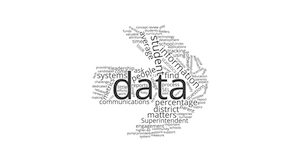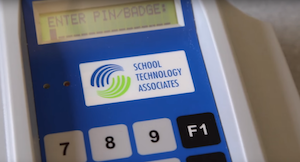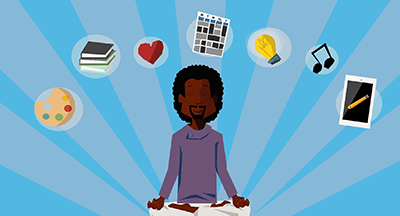
Schools are heavily invested in preparing students for a future built on technology. At the same time, district leaders have refocused on incorporating social-emotional learning (SEL) across all grade levels.
Both do involve a great deal of fluid, rapid change, but beyond that, a number of dichotomies start to emerge. Technology is solid, easy to measure, and widely accepted as being useful. SEL gets a lot of theoretical buy-in, then ends up stumping leaders who try to measure its abstract impact. Still, the Aspen Institute’s research on SEL in schools notes the “lack of consistency doesn’t mean that social and emotional competence is ‘soft, immeasurable, irrelevant, or faddish.’” Further, they note the critical importance of addressing SEL in schools as well as in students’ homes, given the sheer amount of time students spend at school interacting with peers and educators.
We can agree the impact of technology is usually easier to observe than the impact of SEL, though both are important. With that in mind, let's explore how technology can help leaders implement strong SEL initiatives in schools.
Measurement
A primary function of technology is to measure the occurrence of learning and report data. When it comes to student data, if it matters, you should measure it. Data Quality Campaign studied how to achieve the most effective SEL measurement possible. Their evidence produced the “3Ms Test.” SEL competencies measured must be:- Meaningful: Predictive of student outcomes
- Measurable: Valid assessments can produce reliable data
- Malleable: Skills can be taught or developed in school
Skills assessments aren’t the only tech-friendly method of gathering data. Documenting productive struggle using digital methods goes hand-in-hand with building grit and resilience. Although we know simply praising effort works to develop a growth mindset in younger children, once they’ve grown up a little, the strategy begins to fall flat.
New research shows praising teens’ effort may actually backfire. Adolescents have figured out effort means work, and they react accordingly. Instead of pushing effort, teachers instead used technology to document the process teens take when completing assignments or projects. They also suggested group reflection to identify areas of struggle and strength, since peer learning is important at this stage in development.
Technology stretches the possibilities and increases the accuracy of measurement in so many capacities—it’s no surprise schools are embracing new methods to capture and report SEL data.
Curriculum support
Along with expanding measurement strategies, technology solutions provide specialized support and help teachers personalize learning by adjusting the content, learning style, or pace of SEL instruction.For certain populations of students with special needs, using technology to practice SEL skills proves helpful because it provides a more comfortable environment to practice—though researchers are careful to note it doesn’t completely replace real-life interaction. Using technology to complete self-directed projects gives everyone, but especially at-risk students, an opportunity to take ownership and make choices about their learning.
Many schools are incorporating digital citizenship components of SEL to translate those skills to online platforms, including positive interactions on social media. Just as students practice empathy, resilience, and productive struggle IRL, they benefit from learning to practice kindness in the digital world. One tech-centered strategy is to introduce students to other kids in different parts of the world using video conferences—actually seeing and interacting with faraway students helps build empathy and cultural intelligence.
Hardware on the horizon
SEL technology is expanding and is no longer limited to software. Parents are even experimenting with robot companions for their children. MIT researcher Sherry Turkle warns against leaning too heavily on these types of empathy simulators. As with many things in life, simulated connection isn’t up to par with actual human interaction. Plus, humans already have a tendency to overestimate the capabilities of artificial intelligence—one of the major concerns about emerging self-driving cars. Just as driverless cars are a long way from mainstream, there are no robots capable of supporting true emotional connection.Another forthcoming hardware option: wearable SEL tech. A few are commercially available (though none are widely used quite yet). Plans include biometric sensors capable of tracking physical responses aligned to stress and emotion, creating the potential for “minute-by-minute” records of an individual’s emotional state. Theoretically, this data would be used to build self-awareness, manage emotion, and increase empathy. Even the youngest students have wearable tech options, tracking such as exposure to sunlight and words heard to foster literacy and social skills for early learners.
Tech and SEL: Natural companions
SEL’s connection to technology goes beyond assessment and measurement, and it’s more than just downloading an app or two. Give structure to students’ SEL development by fully exploring the capabilities of technology to quantify and enhance learning alongside actual human interaction.And if you really want to go all out, adopt a classroom robot.
Follow-up resource: What to measure
You have the right technology, but what on Earth are you supposed to measure? Get started with 5 Ways to Track SEL Efforts.WHAT'S NEXT FOR YOUR EDTECH? The right combo of tools & support retains staff and serves students better. We'd love to help. Visit skyward.com/get-started to learn more.

|
Erin Werra Blogger, Researcher, and Edvocate |
Erin Werra is a content writer and strategist at Skyward’s Advancing K12 blog. Her writing about K12 edtech, data, security, social-emotional learning, and leadership has appeared in THE Journal, District Administration, eSchool News, and more. She enjoys puzzling over details to make K12 edtech info accessible for all. Outside of edtech, she’s waxing poetic about motherhood, personality traits, and self-growth.




